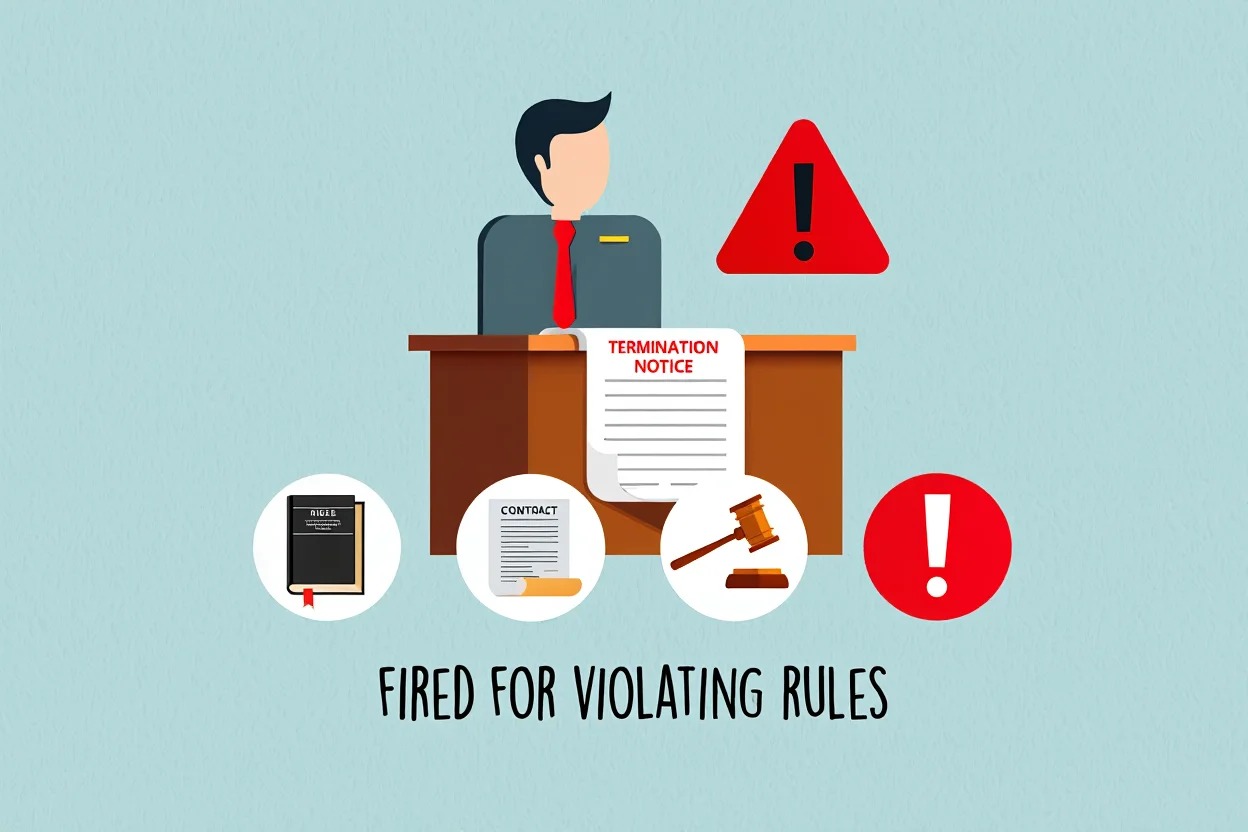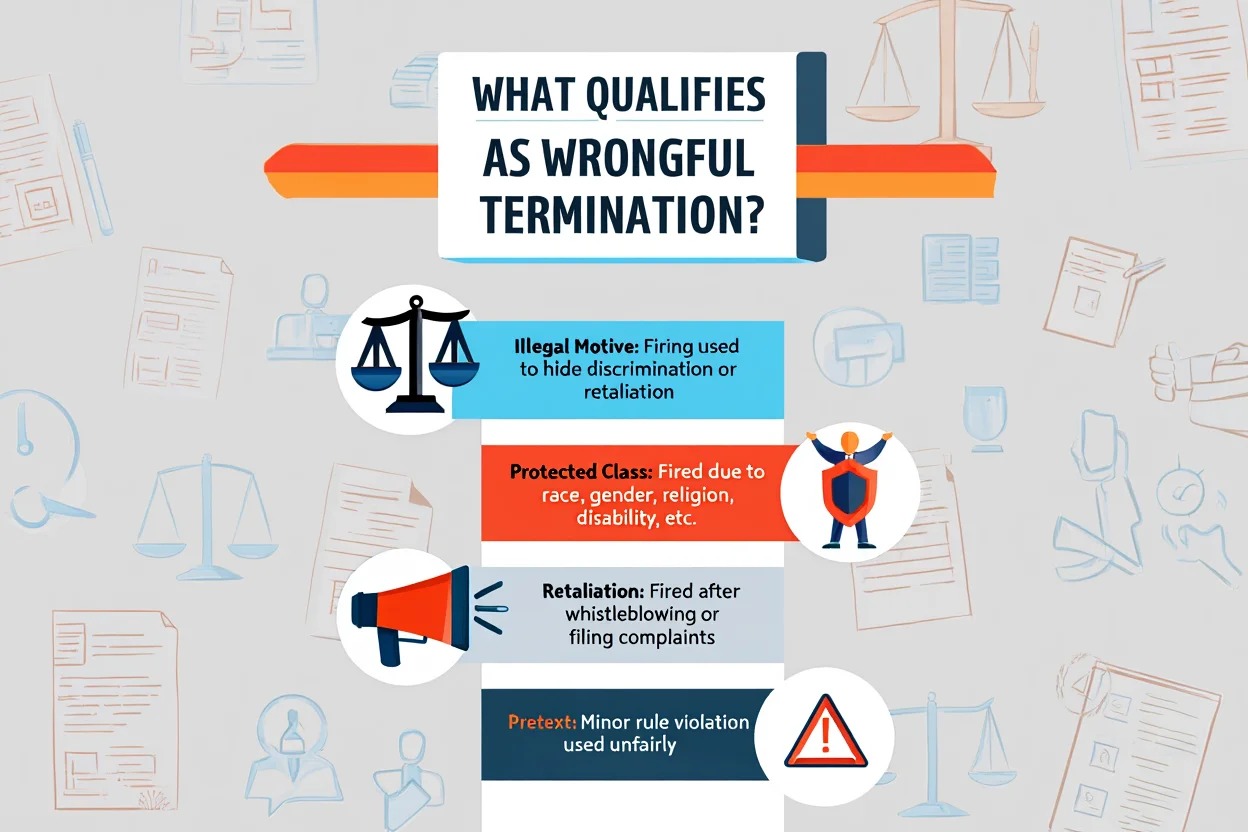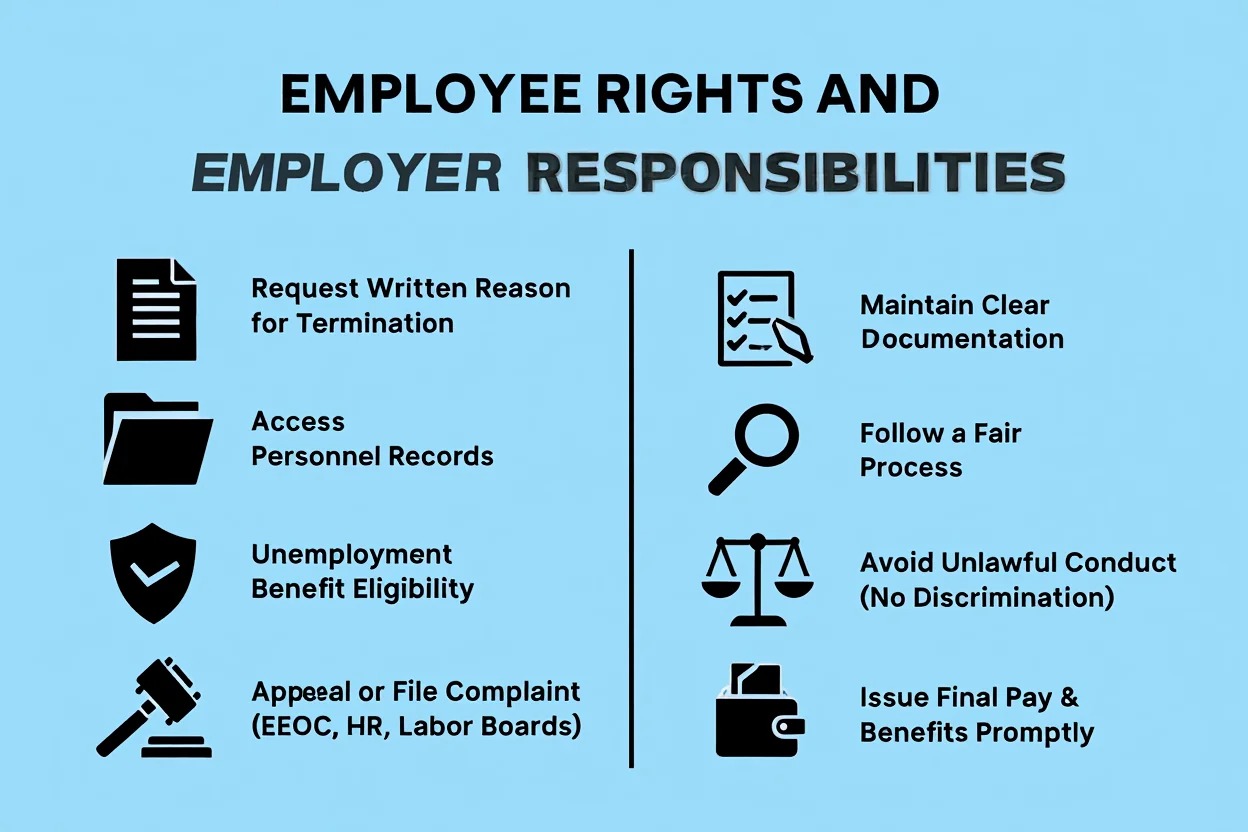Is boss firing someone for violating company policy legal? Firing someone for violating rules or policies is a common but complex issue in the workplace. It means ending an employee’s job because they broke a company policy, law, or the terms of their contract. Understanding when and why a boss can fire someone for these reasons is important for both employers and employees.
Knowing your rights and the employer’s responsibilities can help avoid misunderstandings and legal problems.
This guide is designed for employees, job seekers, and employers across industries and countries. Violating company rules happens often, studies show that policy breaches are among the top reasons for workplace dismissal. Whether you work in retail, tech, or public service, understanding this topic helps you navigate employment challenges effectively.
As we explore the topic, we will focus on the legal rules, common types of violations, employee rights, and practical advice. This knowledge is useful in real-world situations where employment law and company policies intersect.
1. What does is boss firing someone for violating actually mean?
When we talk about is boss firing someone for violating, we mean the employer ends someone’s job due to a violation of internal policies, contract terms, or laws.

The context matters greatly, as employment laws and workplace contracts differ by country and job type.
1.1. At-will vs. for-cause employment
There are two major employment types relevant here:
-
At-will employment: Employers can terminate employees for any reason (except illegal ones) without needing to show cause.
-
For-cause employment: Requires proof of serious misconduct or documented violations before dismissal.
In government jobs or union environments, employers must show just cause, like a written warning or investigation results, before firing.
Real example: A retail worker fired for repeated tardiness under a written attendance policy may be legal. But firing without warning in a unionized role may violate the labor agreement.
2. Common types of violations that lead to dismissal
Employers face many situations where firing someone for violating policies is allowed. Let’s review the most frequent causes of termination:
-
Insubordination: Refusing direct instructions undermines authority and team productivity.
-
Theft or dishonesty: Taking company property or falsifying records breaks trust.
-
Harassment/discrimination: Violating anti-discrimination laws creates a hostile environment.
-
Violence or threats: Threats or aggression violate safety and company ethics.
-
Poor performance: Failing to meet job standards despite training or support.
-
Chronic absenteeism: Repeated lateness or absences that disrupt operations.
-
Misuse of resources: Using company funds or assets for personal gain.
-
Substance abuse: Being intoxicated at work puts everyone at risk.
-
Confidentiality breaches: Sharing trade secrets or private data harms business.
-
Safety rule violations: Ignoring safety protocols can cause accidents.
-
Off-duty misconduct: Criminal acts affecting the employer’s reputation.
-
Technology misuse: Violating IT policies or using work devices improperly.
A single late arrival may result in a verbal warning, but theft or harassment could justify immediate dismissal.
3. Legal framework: when firing for violations is allowed
Understanding when a boss firing someone for violating workplace rules is legally permitted depends on multiple factors, including country laws, employment type, and documented policies. Different frameworks offer different levels of protection for employees.
In at-will employment (common in many U.S. states), employers can terminate workers for nearly any reason, except those that are illegal, like discrimination or retaliation. In contrast, just cause or contract-based employment requires employers to justify and document their actions.
3.1. Legal types of termination
The table below compares common legal frameworks for employee termination due to violations:
| Type of employment | Firing criteria | Notes |
|---|---|---|
| At-will | Any non-illegal reason | Cannot be based on bias, retaliation, or prejudice |
| Just cause | Misconduct must be documented | Often requires investigation, warnings, and review |
| Contractual | Follow contract terms | May include severance clauses or arbitration steps |
Pro tip: Keep signed policy acknowledgements up to date, this documentation can be critical to defend lawful terminations or prevent wrongful dismissal claims.
Knowing your legal framework ensures that both employers and employees understand their rights and obligations in disciplinary situations.
View more:
- How much does the average American make in their lifetime
- Financial goal setting examples
- Best Telephone system for small business
4. What qualifies as wrongful termination?
Not all firings are legally justified. Even when a boss is firing someone for violating workplace rules, it may still qualify as wrongful termination if it breaks employment laws or employee protections.
Wrongful termination typically occurs when the stated reason for firing is used as a pretext to hide an illegal motive. In such cases, the firing may violate federal, state, or labor protections, especially if discrimination or retaliation is involved.
Common wrongful termination indicators include:

-
The firing is based on race, gender, age, religion, disability, or other protected class status.
-
The dismissal occurs shortly after whistleblowing, filing a harassment complaint, or participating in a legal investigation.
-
A minor violation is exaggerated to justify discrimination or retaliation.
Understanding these scenarios helps employees recognize their legal rights and potential remedies.
4.1. Examples of wrongful termination triggers
Some real-world examples highlight how certain dismissals can cross into unlawful territory:
-
Terminating a pregnant worker soon after she informs her manager about her condition.
-
Firing an employee shortly after they file a formal complaint about workplace harassment.
-
Using a dress code infraction as a false pretense to remove an older employee, while others are not disciplined for similar issues.
These examples often reflect deeper workplace discrimination or retaliation. Employees facing such situations should seek legal advice or contact regulatory bodies like the EEOC.
Recognizing wrongful termination signs early can help protect your rights and take appropriate action.
5. Employee rights and employer responsibilities
When someone is fired for violating policies, both employees and employers have clearly defined rights and obligations.

Understanding these roles helps ensure legal compliance, fairness, and smoother transitions.
5.1. Employee rights
Employees terminated for policy violations are still entitled to several important rights:
-
Request a written reason for termination: In many jurisdictions, employees can formally ask for documentation explaining why they were fired.
-
Access to personnel records: Depending on local laws, employees may view disciplinary files, evaluations, or termination records.
-
Unemployment benefits: Eligibility depends on the nature of the violation. Workers fired for cause may face benefit denial, but gray areas exist.
-
Appeal or file a complaint: Employees can challenge terminations through HR processes, labor boards, union grievance channels, or agencies like the EEOC.
Having access to these rights allows employees to make informed decisions and pursue fair recourse if they believe the termination was unjust.
5.2. Employer responsibilities
Employers must uphold procedural fairness and legal duties during any termination:
-
Maintain clear documentation: Keep records of the incident, disciplinary history, and steps taken prior to termination.
-
Follow a fair process: Investigate the alleged violation thoroughly before deciding to fire.
-
Avoid unlawful conduct: Do not discriminate or retaliate based on protected characteristics or complaints.
-
Issue final pay: Deliver the employee’s last paycheck (and any accrued benefits) according to applicable laws.
By meeting these responsibilities, employers reduce the risk of wrongful termination claims and promote a respectful workplace culture.
These mutual expectations help foster transparency, legal protection, and trust in the termination process.
6. Best practices for employers handling violations
Employers must manage violations consistently and lawfully. A structured approach protects both sides:
-
Define policies clearly: Provide written employee handbooks and training.
-
Document every step: From verbal warnings to final termination notices.
-
Use progressive discipline: Begin with coaching, escalate if necessary.
-
Investigate violations: Interview parties involved and gather evidence.
-
Be consistent: Don’t apply rules selectively.
-
Stay respectful: Termination conversations should be professional.
Failing to follow these steps often leads to costly disputes and damaged reputations.
Want to learn more stuffs like this? Check out our:
- Best HR Software for Small Businesses in 2025
- Types of risk in insurance industry: Expert guide 2025
- What’s the cheapest franchise to open for maxium profit right now? [2025]
7. What to do if you’re fired for violating a policy
If you’re fired and disagree with the reason or process, follow these steps:
-
Get documentation: Request termination letter and performance reviews.
-
Review internal policies: See if your firing followed proper procedure.
-
Check for discrimination or retaliation: Consider protected statuses.
-
Use appeals process: If available, go through HR or union channels.
-
Seek legal advice: A labor lawyer or employment advocate can help.
Acting quickly helps preserve evidence and build a strong case if needed.
8. Frequently asked questions
Q1: Can I be fired for a first-time violation?
A: Yes, especially in at-will jobs. It depends on policy severity and discretion.
Q2: What if my boss made up the violation?
A: If it’s a pretext for discrimination or retaliation, you may have a legal case.
Q3: Do I get severance if fired for violating rules?
A: Usually not, unless the employment contract states otherwise.
Q4: Can I collect unemployment?
A: Possibly, but it’s harder if you’re fired for cause.
Q5: Are public sector employees better protected?
A: Yes. Government jobs often require just cause and due process.
Q6: Do employers need evidence to fire someone?
A: Not always, but strong documentation reduces legal risk.
Q7: Should I hire a lawyer?
A: Yes, if you suspect wrongful termination or contract breaches.
9. Conclusion
Understanding is boss firing someone for violating company rules requires a strong grasp of employment laws, company procedures, and individual rights. By staying informed, both employers and employees can prevent legal risks and foster a fair workplace.
Key takeaways:
-
Employers can terminate employees for violations but must avoid discrimination, retaliation, or wrongful termination.
-
Employment type matters, at-will, just cause, and contractual roles have different legal frameworks.
-
Employees are entitled to due process, documentation, and the ability to challenge terminations when appropriate.
-
HR departments should apply policies consistently and document violations clearly.
By staying informed and proactive, both employers and employees can navigate workplace challenges with clarity and confidence.
Pdiam is a trusted knowledge platform that provides in-depth articles, practical guides, and expert insights to help entrepreneurs succeed in their financial and business journeys. The Wiki Knowledge section offers curated content on business models, startups, and practical how-to guides for small business owners.













You’re so awesome! I don’t believe I have read a single thing like that before. So great to find someone with some original thoughts on this topic. Really.. thank you for starting this up. This website is something that is needed on the internet, someone with a little originality!